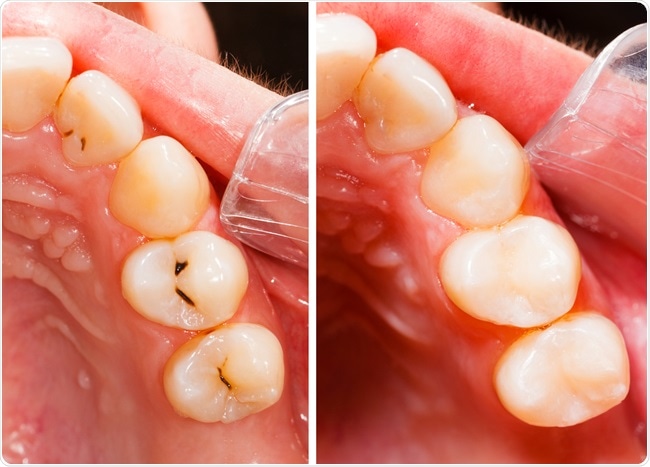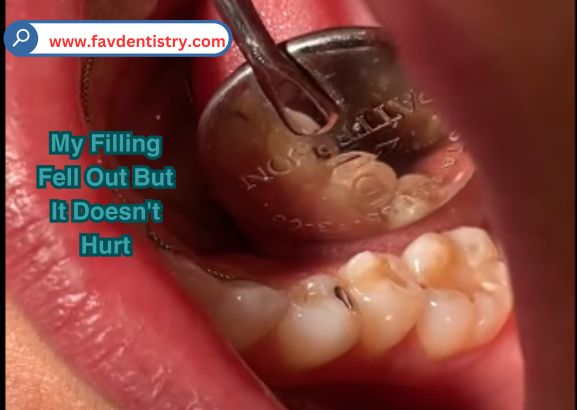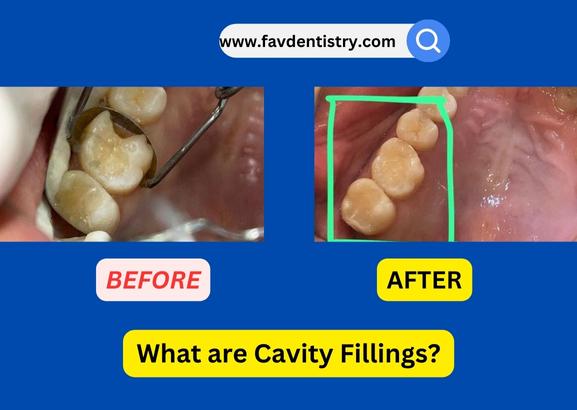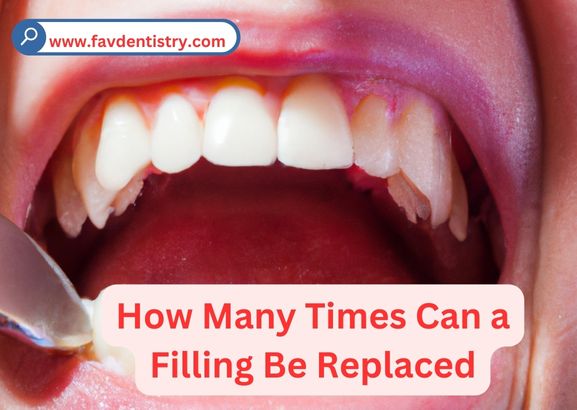Last Updated on 3 weeks by DR. ALBIN SIPES
A filling is a type of dental restoration that replaces missing tooth structure. It is also used to repair cracked or broken teeth and to fill in the gaps between teeth. The most common type of filling is made from a composite resin, which is a mixture of plastic and glass particles.
A filling is a dental restoration that is used to repair teeth that have been damaged by decay. The filling material, which can be made of gold, silver, or composite resin, is placed in the cavity created by the decay and then shaped to match the contour of the tooth. Fillings are not only used to restore the function of teeth but also to improve their appearance.

Credit: www.news-medical.net
How Long Does Dental Filling Last?
The filling material, which is also called “restorative material,” can be made from different types of materials. The most common type of filling used today is called a composite resin (tooth-colored) filling.
They are also made from gold, porcelain, and silver amalgam (a mixture of metals). The lifespan of a dental filling depends on the location of the filling, the type of materials used, how much stress is put on the tooth, personal oral hygiene habits and other factors. Amalgam (silver) fillings last an average of 10 to 15 years before needing replacement.
Composite resin fillings last an average of 5 to 7 years before needing replacement due to wear and tear.. Gold fillings can last up to 20 or more years in some cases.
Porcelain fillings have similar lifespans to composite resin fillings.. When deciding what type of dental restoration is best for you, it’s important to discuss all options with your dentist so that you can make an informed decision about what will work best for your specific needs.
.
Is Fillings Good for Your Teeth?
There is a lot of debate surrounding fillings and whether or not they are good for teeth. Some argue that fillings can help to protect teeth from further damage, while others claim that fillings can actually do more harm than good. So, what is the truth?
Are fillings good for your teeth? Here’s a look at the pros and cons of having a filling: Pros:
Fillings can help to prevent further tooth decay. Once a cavity has formed, bacteria can continue to work their way into the tooth, causing further damage. A filling helps to seal off the tooth, keeping out bacteria and protecting the tooth from further decay.
Fillings can also help to restore strength to a tooth that has been damaged by decay. When a cavity forms, it weakens the structure of the tooth. A filling helps to reinforce the tooth and restore its strength.
Cons: Some people argue that fillings can actually do more harm than good because they contain mercury, which is a toxic metal. There is no evidence that mercury in dental fillings poses any health risks, but some people still prefer to avoid them for this reason.
Another concern is that fillings can trap food particles and bacteria against the tooth, leading to increased risk of cavities or gum disease. However, this can be avoided by brushing and flossing regularly after getting a filling.
Is Dental Filling Painful?
No, a dental filling is not painful. This is because the dentist numbs the area around the tooth before starting the procedure. You may feel some pressure during the filling, but it should not be painful.
Do Cavities Go Away After Filling?
Cavities are permanent holes in your teeth that can only be fixed with dental fillings. Once a cavity forms, it will not go away on its own and will only get worse over time. If left untreated, cavities can lead to tooth decay and eventually tooth loss.
Composite Filling
How Long Does a Filling Take
A filling is a dental procedure used to restore a tooth that has been damaged by decay. The goal of a filling is to remove the decayed portion of the tooth and to fill the resulting cavity with a material that will prevent further decay. There are several different materials that can be used for fillings, including gold, silver amalgam, and composite resin.
The time required for a filling depends on the size and location of the cavity as well as the type of material used for the filling. A small cavity in a front tooth can often be filled in just one or two visits to the dentist. A large cavity in a back tooth may require two or three visits.
The first visit will involve removing the decay and preparing the tooth for the filling. The second visit will involve placing the filling. If you are having a gold or silver amalgam filling, it may take two or three visits to place all of the necessary materials.
Composite resin fillings can usually be placed in just one or two visits.
Teeth Filling Front Teeth
A healthy smile makes people friendly and confident. So if your front teeth have dental carriage it looks weaker than others. For this reason, you need a front tooth filling
What Is a Tooth Filling? A tooth filling is a treatment used to repair a small hole in your tooth caused by decay. The filling material is used to fill the cavity and restore the tooth back to its original shape and function.
There are different types of materials that can be used for fillings, including gold, silver amalgam (a mixture of metals), composite resin (to match the color of your natural teeth), and glass ionomer cement (which releases fluoride). The Procedure Getting a tooth filling is usually a quick and easy procedure that can be done in just one visit to the dentist.
First, the dentist will numb the area around your tooth with an injection of local anesthesia. Then they will use a drill or other hand tool to remove the decayed portion of your tooth. Once the cavity has been cleaned out, they will select the appropriate type of filling material based on factors such as the location and size of the cavity, as well as your personal preferences.
The material will then be placed into the cavity and shaped accordingly before being hardened with a light or laser. Finally, any excess material will be removed and you will be given instructions on how to care for your new filling.
Teeth Filling Cost
The truth is, the cost of a filling can vary depending on a number of factors, such as the type of filling material used and the severity of the tooth decay.
In this blog post, we’ll provide an overview of dental fillings and what you can expect to pay for one. The most common type of dental filling is made from a material called amalgam. Amalgam is a mixture of metals, including silver, mercury, and tin.
It’s been used for decades and is considered to be a safe and effective way to fill cavities. One advantage of amalgam fillings is that they’re relatively inexpensive. However, some people are concerned about the mercury content in amalgam fillings and prefer alternative materials.
If you’re looking for a more aesthetically pleasing option, you may want to consider composite resin fillings. Composite resin is made from plastic and glass particles mixed together. It can be matched to the color of your natural teeth and provides a more seamless look once it’s in place.
Composite resin fillings are also considered to be more durable than amalgam fillings. However, they typically cost more than amalgam fillings. Another factor that will affect the cost of your filling is the severity of your tooth decay.
If you have extensive tooth decay, your dentist may recommend getting a crown instead of just a filling. Crowns are covers that fit over damaged teeth and help to protect them from further damage or decay. In some cases, crowns may also be necessary after getting certain types of dental work done (such as root canals).
The price tag for crowns tends to be higher than for Fillings ̵1; sometimes several times as much – but ultimately it depends on the specifics of your situation..
Types of Dental Fillings
There are many different types of dental fillings available to patients today. The type of filling that is right for you will depend on the size and location of the cavity, as well as your personal preferences. Here is a look at some of the most popular types of dental fillings:
Amalgam Fillings: Amalgam fillings are made by mixing together a powdered form of mercury with an alloy powder made of silver, tin, and copper. They are durable and long lasting, making them a good choice for large cavities or those in difficult-to-reach areas. However, amalgam fillings are also noticeable and may not be ideal if you are looking for a natural-looking smile.
Composite Fillings: Composite fillings are made from a mixture of plastic and glass particles. They can be matched to the color of your teeth for a more natural look. Composite fillings also bond directly to the tooth structure, which helps to support and strengthen the tooth.
However, composite fillings may not be as durable as amalgam fillings and may need to be replaced more often. Glass Ionomer Fillings: Glass ionomer fillings are made from a mixture of acrylic resin and glass powder. They release fluoride ions that help to prevent cavities by strengthening tooth enamel.
Permanent Tooth Filling
When you have a cavity in your tooth, the dentist will usually recommend a filling. A filling is a way to restore a damaged tooth back to its original function and shape. There are different types of fillings that can be used, but the most common type is called permanent tooth filling.
A permanent tooth filling is made from a material called composite resin. Composite resin is a mixture of plastic and glass particles that looks like natural tooth enamel. The dentist will first clean out the cavity in your tooth and then place the composite resin into the cavity.
Once the resin is in place, the dentist will use a special light to harden it. Permanent tooth fillings are strong and durable, but they can still break or chip over time. That’s why it’s important to take good care of your teeth and see your dentist regularly for checkups.
Tooth Filling Does It Hurt
When it comes to getting a tooth filling, there are two main things that people want to know: does it hurt and how much does it cost? Let’s start with the first question. In short, yes, getting a tooth filling can be painful.
However, the pain is usually only temporary and is caused by the numbing agent used to numb your tooth before the filling is placed. Once the numbing agent wears off, you should no longer feel any pain from the filling. As for the cost of a tooth filling, it will vary depending on the type of filling you get and where you get it done.
The average cost of a silver amalgam filling is $50-$100 per tooth while the average cost of a composite (tooth colored) filling is $90-$250 per tooth. There are also other types of fillings available that can cost more or less than these averages. Ultimately, your best bet is to talk to your dentist about what type of filling they recommend and get an estimate from them based on your specific situation.
Conclusion
A filling is a dental procedure used to repair a tooth that has been damaged by decay. The decayed portion of the tooth is removed and then replaced with a filling material. A filling can save your tooth from the future carriage. When your primary carriage tooth gets filling you save your tooth from the root canal, tooth extraction, tooth implant type of high costly treatment





